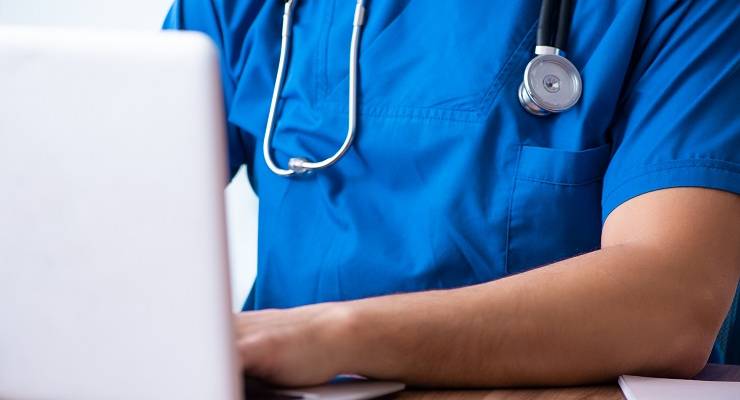
As the co-owner of a small GP practice since 1988, I’m pretty familiar with my work environment.
In early March I went to the UK. This week, after the compulsory two weeks’ quarantine, I hopped on my bike and pedalled back to St Kilda.
The workplace I had known for over 30 years had become foreign territory.
I was greeted at the (locked) gate by that day’s appointed door bitch, as she announced herself. None shall pass.
Fortunately, relieving her of all four limbs was not required — she just took my temperature, doused my hands with sanitiser and let me in.
And I’m supposed to be her boss.
In the waiting room, two-thirds of the chairs were gone. Red masking tape formed angry crosses on the floor, marking the no-go areas around the reception desk. Staff looking like something out of M*A*S*H, all scrubs and face masks.
And something else. There were no patients.
In my absence, the practice had moved to telehealth as the first and often only point of contact. I’d already had a taste of how efficient this could be, as my sole way of consulting during quarantine. Talking with the other doctors they all concurred, with a mixture of surprise and reluctance, on how well the new system seemed to be working.
Surprise, because we had all assumed it would be inferior. Reluctance, because what does it say about how we used to work?
General practice covers everything. We see serious illness, of course, and must always be alert to what are called Red Flags, the signs that something nasty might be brewing (coughing blood? Not good). But much of good GP work is to know when to interfere as little as possible, ensure the patient is OK and wait for the body to heal. And most of that can be done on the phone.
Rashes can be checked by photos, wheezy kids by video, investigation slips emailed, prescriptions issued and even sometimes sent by that ancient technology, the fax.
Yes, we lose all that visual information. But with patients I have known for years, the sound of their voice brings them instantly to mind. And I can almost see their expressions and gauge their moods from their tone.
For those who really need it, we arrange for them to come in. If they can get past the door bitch.
Review is straightforward. I had a man at home very unwell with proven COVID-19. I spoke to him and his wife every day until he was better. It’s a rare doctor who’s ever done daily home visits, but telehealth made it possible.
For the patients, there’s no travelling, waiting in a room full of snotty kids reading last decade’s Reader’s Digest then schlepping back home. They seem to love telehealth as much as we do.
It’s only been a couple of weeks, and already this has become our new standard. In six months, or whenever it is that some semblance of normality returns, it will be entrenched and irreplaceable.
Telehealth is here to stay.
Nick Carr is a Melbourne-based GP, author and broadcaster.







Crikey is committed to hosting lively discussions. Help us keep the conversation useful, interesting and welcoming. We aim to publish comments quickly in the interest of promoting robust conversation, but we’re a small team and we deploy filters to protect against legal risk. Occasionally your comment may be held up while we review, but we’re working as fast as we can to keep the conversation rolling.
The Crikey comment section is members-only content. Please subscribe to leave a comment.
The Crikey comment section is members-only content. Please login to leave a comment.